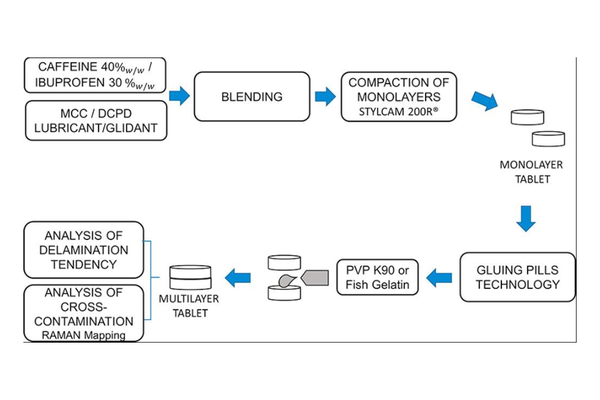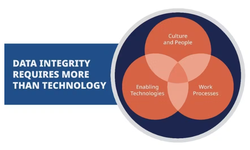Scientific papers
Controlling layer weight, preventing delamination, and minimizing cross-contamination pose significant challenges in the production of compacted multilayer tablets (MLT). This study introduces a novel manufacturing approach for MLT called Gluing Pills Technology (GPT). High quantities of ibuprofen free acid and caffeine anhydrate were blended with microcrystalline cellulose (MCC) and dibasic calcium phosphate dihydrate (DCPD), followed by compaction into monolayer tablets. The GPT was utilized to glue these monolayer tablets together, employing solutions of either fish gelatin or polyvinylpyrrolidone K90 as gluing agents with defined viscosity. The study investigated factors influencing the deformation behavior of monolayer tablets (elastic recovery, tensile strength, and porosity) when transitioning to bilayer tablets via the GPT. Results revealed that high elastic recovery levels adversely impacted the robustness of GPT bilayer tablets, and the choice of gluing agent played a crucial role. Additionally, Raman microscopy was employed to qualitatively assess the gluing layer's function as a barrier to cross-contamination between two monolayer tablets. The study demonstrates the viability of GPT for producing robust MLT, highlighting its potential for real-time production of individualized fixed-dose combinations in translational pharmaceutics and personalized medicine applications.

Comments
No comments posted yet.
Add a comment















